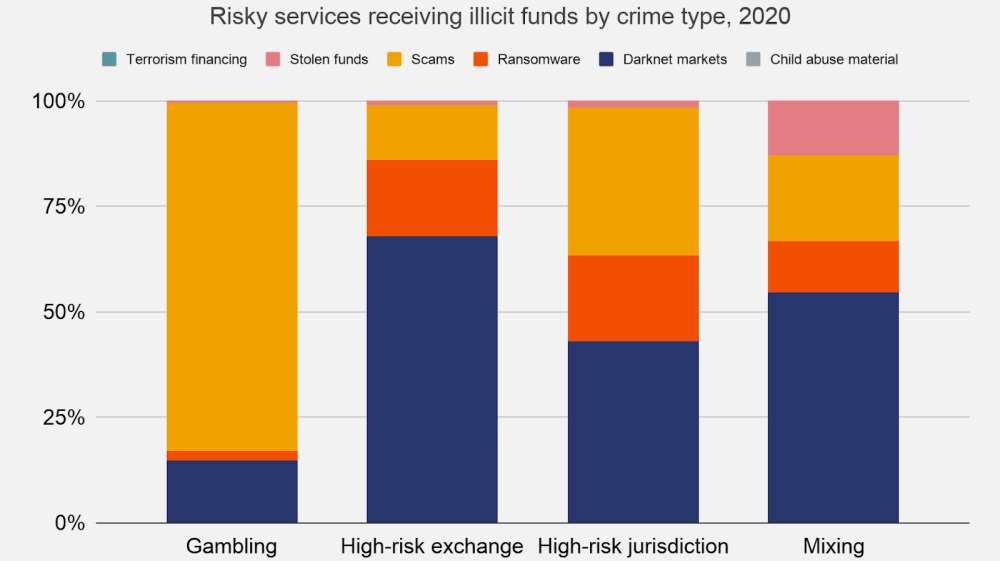Over 55% of Crypto Laundering Tied to 270 Blockchain Addresses
According to analysts at Chainalysis, more than half of all cryptocurrency laundering cases are connected to a surprisingly small cluster of online services. These include high-risk exchanges (with low reputations), gambling platforms, specialized mixing services, and financial services operating in high-risk jurisdictions.
To gather these statistics, researchers examined cryptocurrency addresses associated with scams, ransomware attacks, terrorism financing, hacks, child exploitation, and payments related to darknet marketplaces that sell drugs, weapons, and stolen data.
Key Findings
- Only 270 blockchain addresses were responsible for laundering about 55% of all cryptocurrencies linked to criminal activity.
- In 2020, roughly 75% of all illicit cryptocurrency—about $1.7 billion—passed through just 1,867 addresses.
“This time, the concentration is higher than in 2019. In particular, we see that a larger share of illegal cryptocurrency is being sent to addresses that receive between $1 million and $100 million per year,” the researchers noted.
Analysts say the growing concentration of deposit addresses used for illegal cryptocurrency transactions highlights criminals’ increasing reliance on a small group of over-the-counter brokers and other services specializing in money laundering.
Law Enforcement Implications
Chainalysis concludes that the crypto laundering sector is currently in a vulnerable position. Just a few well-coordinated law enforcement operations targeting these services could disrupt the movement of illicit funds for many criminal groups.



